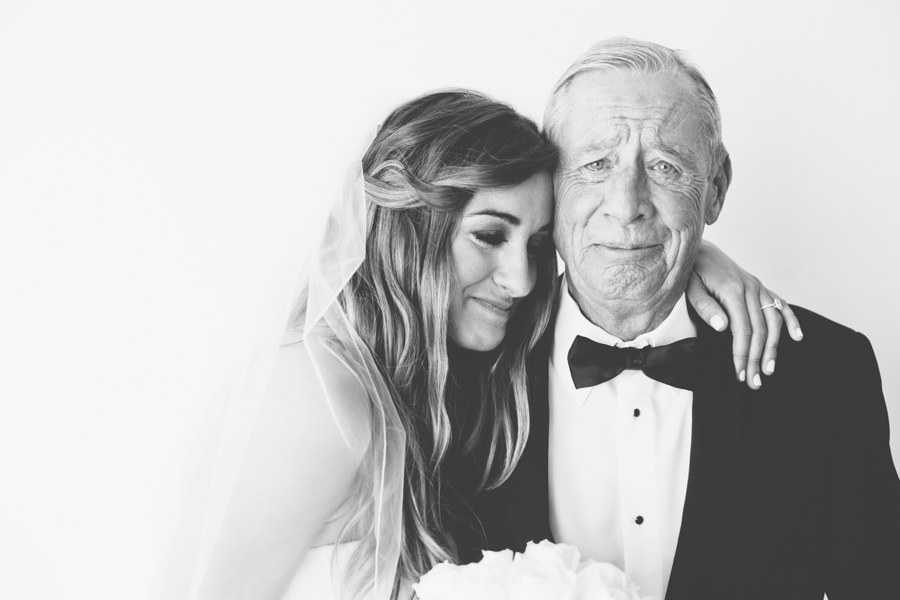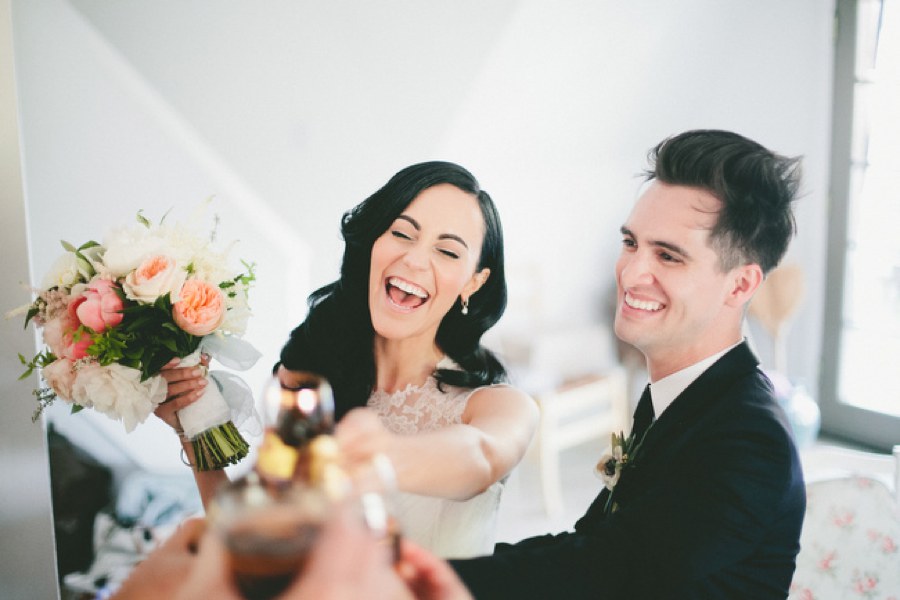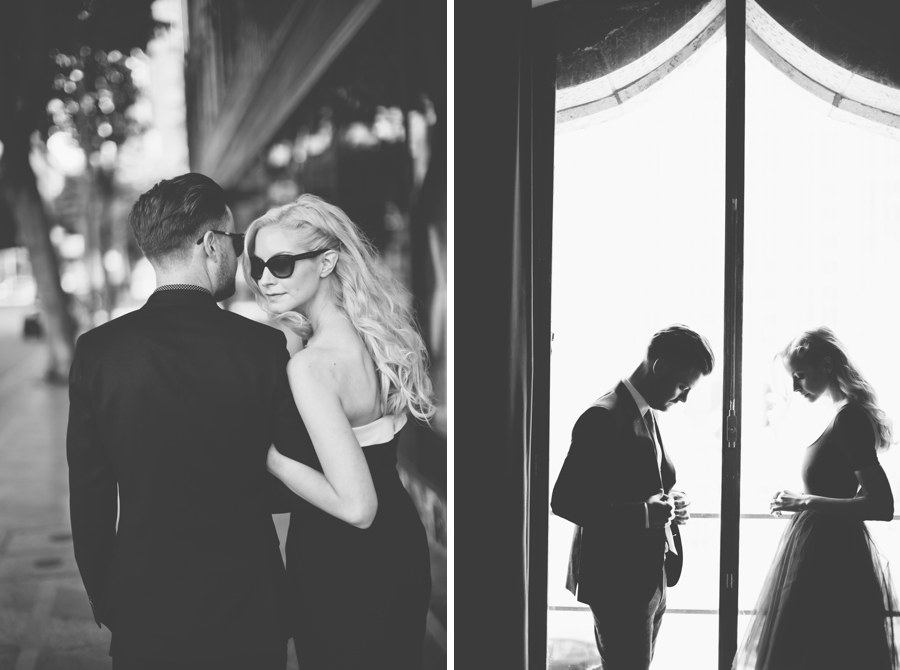Unlock The Secrets to Stunning Photos: Building Trust and Connection with Your Subjects
One of the first (and most powerful) lessons I learned in photography had nothing to do with photos. It had everything to do with trust.
When I was 20 years old, I met my mentor, Michael Zagaris (the legengary rock and roll photographer, also team photographer for the SF Niners and Oakland A’s). He taught me that the art of capturing a great photograph had less to do with technicals (while don’t get me wrong, this is still important – as I’ll refer to later), and more to do with connecting with your subject on a personal level. The vast collection of rare and jaw-dropping imagery he has created all came from his ability to build trust with every single person he met. They love him (some even adore him) for being a true raconteur, and just plain funny and really interesting person. By his side for eight years, I watched him work his magic and learned the key to any great image I’d ever take was all about the trust I’d build with my subject.
As a naive and earnest photo student at SF State, I had no idea what I was getting myself into – in the best way. I found myself inside the locker room with famous powerful athletes parading around in nothing more than their birthday suits, hanging out in the dugout with Nick Swisher, riding the team bus seated behind Barry Zito, and I felt like a kid sister with the team. They were surrounded by media constantly, kept up their image, but when they were with me and Zagaris, they relaxed. And that’s where the magic happened.![]()

BOSTON, MA – OCT 4: Ted Lilly, Tim Hudson and Barry Zito pregame at Fenway Park on Oct 4, 2003 in Boston, MA. The Red Sox defeated the Athletics 3-1. ….(Photo by Michael Zagaris/MLB Photos)
After spending nearly a decade with Zagaris and the teams, I created my own photography company and moved into the wedding industry. Using all of my experience on the field along with my photojournalism training at SF State, I knew that I wanted to do this differently. I built a company with a team of photographers and trained each of them with the lessons I’ve learned about what makes a photographer really incredible at what they do.
During my 20 years in this field, I’ve worked alongside many talented photographers and trained over 100 artists who worked under my wing. As I’ve contracted these photographers out to various clients, I’ve noticed a very interesting trend: most clients want connection over perfect image quality. For example, I can send my most technically sound and artistically gifted photographer to photograph a client and deliver incredible imagery. However, if the photographer didn’t connect with them emotionally and build rapport (or even worse, if they clashed), then no matter how incredible the images turn out, the client is likely to be more picky and prone to find a reason to be unhappy with the images. Whereas, when I send out my more emotionally-aware photographer who values bonding with their subjects, despite being technically rough-around-the-edges and growing in their artistic inspiration – when the images are delivered to the client, they RAVE about them. Why? Because the photographer unlocked a truly relational experience of trust with their subject.
So, how exactly can we do this? The best photographers I know all value the below qualities and focus on embodying them intently in their work. Whether they realize or not, they are tapping into their emotional intelligence (a.k.a. “EQ”). It’s a skill that can be developed and is important for social awareness and relational competence in any setting, but particularly powerful in a place that requires vulnerability from a subject to open themselves to a camera.
Top 5 Signs of a High EQ Photographer
1) AN EASYGOING LEADER
Calm under pressure, light-hearted. Confidently able to take the reigns of a situation while putting those around you at ease.
2) PROBLEM-SOLVER
Able to make solid decisions quickly while under pressure and changing weather, backgrounds and time constraints.
3) A FRIEND (A.K.A. TEMPORARY THERAPIST) 😉
From wedding nerves to challenging family dynamics, you genuinely care for your client’s well being. You make people feel good.
4) PASSIONATE
Your personal and professional passion will be what drives you when you are up against fatigue and challenges. No amount of money will drive you like passion will.
5) INNOVATIVE
Creative at every turn. Always trying something new at every shoot. “Break” the rules!

Pre-Camera “Work”
As photographers, we don’t typically show up to a shoot instantly prepared to capture magic. It takes preparation and planning. Lots and lots of practice. As I said to Brendon Urie before hiring me for his wedding, “The key to the most transcendent art is: learning all of the rules, so well – so that you can break them at just the right time to create something incredible.” He nodded and smiled, knowing this truth was the key to his incredible success. He signed the dotted line.

The work we do ahead of a shoot allows us to be prepared to connect with our client. To establish trust and make them feel comfortable. Then the images come naturally.
Before you begin any shoot, start the groundwork and preparation using these steps:
GOOGLE YOUR CLIENT: Find their IG/Facebook account and learn about who they are, what they love!
TEXT THEM AHEAD OF TIME: This is a personal touch that goes a long way. Text them when you have arrived to scout, or even the night before – telling them that you are looking forward to their shoot.
MAP THE LOCATION: Don’t cut it that close – it’s not worth the stress. Use Waze, anticipate the unexpected. Get there early and scout or get a coffee.
CONFIDENCE: Sometimes we don’t have the confidence, we’re super nervous! That’s fine. Fake it ’til you make it. Keep smiling even when you’re freaking out, eventually you’ll get in the zone.
SUBJECTS REFLECT BACK WHAT YOU GIVE: In light of the above point, your energy is contagious. Mirror their energy, but always with a bit of positive pep or passion to help lift them up. If you are tense, they will be tense. If you are happy and excited for the images, they will relax and feel at home.
Mid-Shoot Convo
Once the shoot begins, there is a fine line between conversation and photographs. The best photos come after a conversation has naturally been unfolding. However, the key is to not keep them talking the entire time: their mouth open mid-sentence isn’t the hero image. It’s the moment after you have settled them into an experience and they feel comfortable to follow your lead.
SET EXPECTATIONS. Subjects arrive at a shoot with silent questions in their mind: “What will they make me do? Do I smile the whole time? Will I look weird?” One of the most disarming things you can do is voice those concerns right off the bat, “Hey, It’s normal to feel nervous. No worries, I’ll give you guidance when I want you to look my way- but when I’m not talking, I really want you to focus on ‘x’.”
KEEP IT SIMPLE AT THE START: It usually feels better when they know what to do with their bodies – but not over-complicated poses. Start with walking, or playing, moving instead of frozen poses in the beginning. Movement helps relieve the anxiety of those early shoot jitters.
USE THEIR NAMES: Dale Carnegie knew it works because it does. People love to hear the sound of their own names.
“LET’S TRY THAT AGAIN.” vs “THAT WAS GREAT, LET’S DO IT ONE MORE TIME!”: It happens all of the time: either your exposure was way off, or the pose didn’t quite land right. Instead of announcing the problem (which immediately makes a subject question themselves – or you), simply and happily share that you want to do it again (with the inference that the first shot was so great, you want more of it!) It does wonders for someone’s confidence 😀
TELL THEM SPECIFICALLY WHAT YOU LIKE AND WHY: A subject can’t see through your lens, and when you see they moved in just the right way – there is no way for them to know unless you tell them. Instead of “Oh! Yes that was great!” say, “Oh, your hand moving on your face like that was amazing. Keep doing that.”
SHOW THEM HOW: You have the vision, you can see exactly what you want in this image. The subject has no idea what you see. So, the easiest way is to physically show them. Stand next to them and model exactly the position you are considering, but encourage them to make it their own.
When you build trust and rapport with someone, you gain access. Access into their world, their true personality. Access is one of the main components to all of the great images that inspire us.
It can be a little risky or even downright scary to step into some experiences where we want access, knowing that we have to be bold to get there. Sometimes we need to dig deep for some courage to try something new, or expose ourselves to something we’ve never done before. Make the choice to seek authentic connection with those around you. Enter into their story and watch your images transform.
CATEGORIES:
